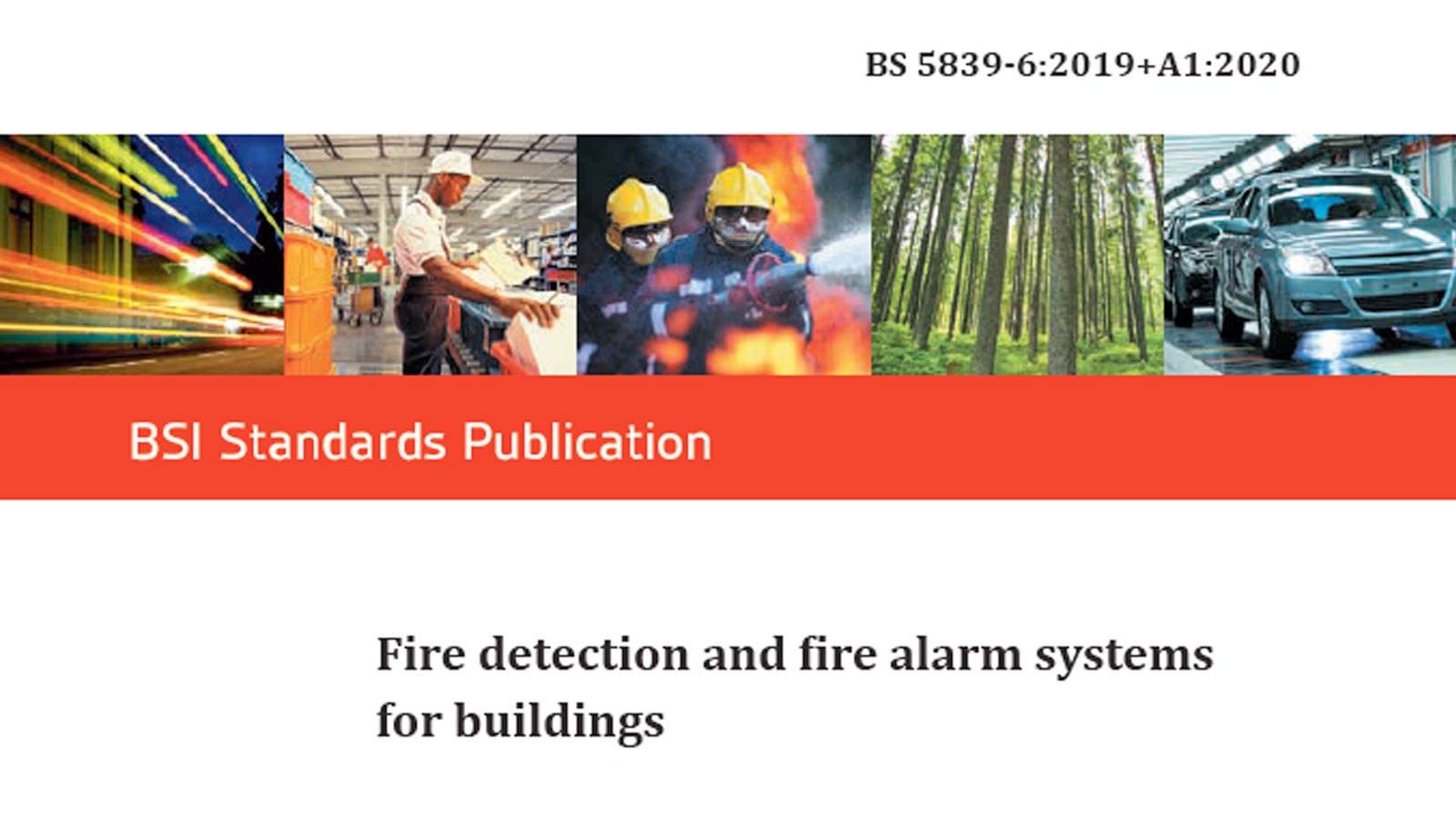A new edition of the Code of Practice for fire alarms in housing, BS 5839-6:2019, has just been published, reinforcing the importance of interconnected smoke and heat alarms as an essential first line of defence to provide early warning of fire at low cost, as Kidde Safety Europe reports.
Unambiguous recommendations for domestic smoke and heat alarm systems are essential to make occupants (and therefore, alerted fire and rescue services) aware of fires sooner and at an earlier stage in development, reducing risk of injuries, deaths and property damage.
BS 5839-6:2019 Fire detection and fire alarm systems for buildings – Part 6: Code of practice for the design, installation, commissioning and maintenance of fire detection and fire alarm systems in domestic premises provides the latest, definitive guidance.
Published on 1 May this year, the Code relates to:
- Dwellings designed to accommodate a single family
- HMOs comprising self‑contained units, each designed to accommodate a single person or family
- Sheltered housing, both the dwelling units and the common areas
- Supported housing and short-term self-catering.
Its recommendations apply to both new and existing properties. Standards such as the Code take the form of guidance and recommendations and are not in themselves mandatory – although they may be referred to in specifications and used as a benchmark in many situations including legal proceedings.
They often form the basis for Building Regulations requirements (such as Approved Document B) but also provide important guidance where Regulations do not apply.
Grades and categories
Important new changes to the Code are focused on ‘Grades’ (the reliability of a system in terms of its power sources) and ‘Categories’ (in which areas smoke/heat alarms are required for detection). Grades D and F – essentially mains with back-up battery and battery only, respectively – have now been sub-divided to give:
Grade D1: A system of mains-powered alarms, each with a tamper‑proof standby battery
Grade D2: A system of mains-powered alarms, each with a “loose” user‑replaceable standby battery
Grade F1: A system of battery-powered alarms each with a tamper‑proof primary battery
Grade F2: A system of battery-powered alarms, each with a “loose” user‑replaceable battery.
Here, a tamper-proof battery is defined as one that: “is not designed to be removed… for example, cells soldered to a printed circuit board.”The three previous categories remain in the latest edition of the Code, as follows:
Category LD1: A system of alarms installed throughout the premises – providing maximum protection
Category LD2: A system of alarms in escape routes and in specified higher risk rooms, such as kitchen and living room
Category LD3: A system of alarms in escape routes only.
Minimum recommended grades and categories for various types of housing are set out in Table 1 of the Code. This has been simplified in the 2019 edition with just two columns covering existing, and new or materially altered properties. A previous third column – the source of much confusion – has now been removed, as proposed by Kidde.
Table 1 recommendations apply where occupants or their characteristics are unknown (such as new housing) but also form the basis for other housing where a risk assessment might result in a higher alarm provision than Table 1 – but never lower.
The minimum standard recommended by the Code applicable to most properties with up to three storeys and no single floor over 200m2 continues to be Category LD2. This means smoke alarms in living rooms, as well as escape routes, and also heat alarms in every kitchen.
Regulation conflicts
Category LD3, with smoke alarms in escape routes only, is not recommended in any rented properties – or in any new homes, which conflicts with the current Approved Document B (AD B).
Currently, AD B states that: ”All new dwelling houses should be provided with a fire detection and fire alarm system in accordance with the relevant recommendations of BS 5839-6:2004 to at least a Grade D Category LD3 standard.”
In addition, AD B recommends a heat alarm only where the kitchen area is not separated from the stairway or circulation space by a door. However, this AD B guidance conflicts directly with the ‘relevant recommendations’ of BS 5839-6.
Notably, the Code recommends a minimum Category LD2 (including heat alarms in all kitchens) where Building Regulations apply. So, AD B guidance on fire detection and alarm systems in dwellings must now be completely reviewed to remove the confusion of conflicting recommendations.
In the meantime, adopting the relevant recommendations of BS 5839-6 correctly, including a level of protection of Category LD2, could reduce danger to life and property.
In the new Code, minimum grades (for properties with less than 200m2for any floor area) can generally be summarised as follows. Hard-wired mains Grade D1 is recommended for all rented properties and Grade D2 for owner-occupied properties that are new, or existing with four or more storeys.
It’s important to note that hard-wired Grade D2 is also recommended in place of battery-only Grade F2 where rewiring is planned. Grade F2 is only recommended in owner-occupied existing properties up to three-storey, but replaced by Grade F1 (not mentioned in Table 1 itself) if there is any doubt about battery replacement.
Fire and CO alarm systems
Finally, the 2019 edition of the Code now recognises the growing interest in comprehensive systems combining hard-wired smoke, heat and carbon monoxide (CO) alarms, stating that: “Mains powered CO alarms conforming to BS EN 50291 and installed in accordance with BS EN 50292 may also be interlinked with the fire detection and alarm system if the manufacturer of all the components makes such a recommendation.”

